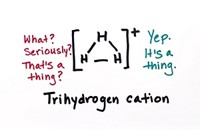Advertisement
Grab your lab coat. Let's get started
Welcome!
Welcome!
Create an account below to get 6 C&EN articles per month, receive newsletters and more - all free.
It seems this is your first time logging in online. Please enter the following information to continue.
As an ACS member you automatically get access to this site. All we need is few more details to create your reading experience.
Not you? Sign in with a different account.
Not you? Sign in with a different account.
ERROR 1
ERROR 1
ERROR 2
ERROR 2
ERROR 2
ERROR 2
ERROR 2
Password and Confirm password must match.
If you have an ACS member number, please enter it here so we can link this account to your membership. (optional)
ERROR 2
ACS values your privacy. By submitting your information, you are gaining access to C&EN and subscribing to our weekly newsletter. We use the information you provide to make your reading experience better, and we will never sell your data to third party members.
Education
Newscripts
Fall Leaves and the Model of Fluid Forces, Candy Beckons Coatings Maker, Sweet Spot Discovered in the Milky Way
by Marc S. Reisch
November 8, 2004
| A version of this story appeared in
Volume 82, Issue 45
The two have published the result of their investigation in the journal Physical Review Letters [93, 144501 (2004)]. The article is titled "Falling Paper: Navier-Stokes Solutions, Model of Fluid Forces, and Center of Mass Elevation."
Wang explains, "Leaves and paper fall and rise in a seeming chaotic manner. Because the flow changes dramatically around the sharp edges of leaves and paper, known as flow singularity, it makes the prediction of the falling trajectory a challenge."
The two used computers to show why classic aerodynamic theory cannot predict the trajectory of thin, flat things. "We found the flat paper rises on its own as it falls, which would not happen if the force due to air is similar to that on an airfoil. Instead, the force depends strongly on the coupling between the rotation and translational motions of the object."
What is predictable, Wang says, "is that as the autumn leaves tumble down, they drift in particular directions, depending on the way they turn. This may explain why you are getting the leaves from your neighbor."
Candy beckons coatings maker
High prices for raw materials and energy have made the chemical enterprise a tough place to do business lately; so Flamemaster, a maker of sealants, adhesives, and heat-resistant coatings, is going into the candy business. The Sun Valley, Calif., firm plans to spin off its existing business to shareholders as Flamemaster Aerospace and has agreed to acquire Best Candy & Tobacco of Arizona.
Shareholders seemed delighted with the proposal. Within days of the announcement in early October, trading in the small firm's shares swelled 30%, reaching $3.85.
Sweet spot discovered in the Milky Way
Using the Robert C. byrd Green Bank Telescope in West Virginia, astronomers have found a cloud of frozen sugar only a few degrees above absolute zero near the center of the Milky Way. The discovery, reported in the Sept. 20 issue of Astrophysical Journal Letters [613, L45 (2004)], suggests that the molecular building blocks necessary for the creation of life could be traced to reactions in interstellar space.
Scientists detected the eight-atom sugar molecule glycolaldehyde in a gas and dust cloud called Sagittarius B2--about 26,000 light-years away from Earth--by detecting faint radio-frequency emission from the molecules.
Glycolaldehyde, a so-called two-carbon sugar, is composed of two carbon atoms, two oxygen atoms, and four hydrogen atoms. It can react with a three-carbon sugar to produce a five-carbon sugar called ribose. Ribose molecules form the backbone structure of DNA and RNA, which carry the genetic code of living organisms.
Clouds like Sagittarius B provide the raw material from which new stars and planets are formed. The molecular building blocks necessary for the creation of life occur in interstellar clouds long before they collapse to form a new solar system with planets. This fact, says Jan M. Hollis of NASA's Goddard Center, suggests "a universal prebiotic chemistry."
The actual formation of a planetary system is such a hot process that any prebiotic molecules would likely be destroyed. However, this study has shown that molecules may form in very cold outer regions of a young solar system following the star-formation process. The collision of a comet with a young planet, or the passing tail of a comet, might "seed" a young planet with prebiotic materials, the scientists suggest.
This week's column was written by





Join the conversation
Contact the reporter
Submit a Letter to the Editor for publication
Engage with us on Twitter